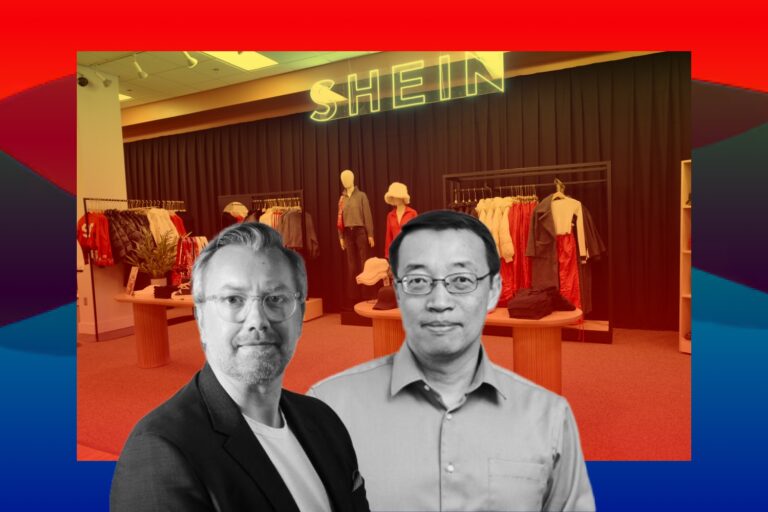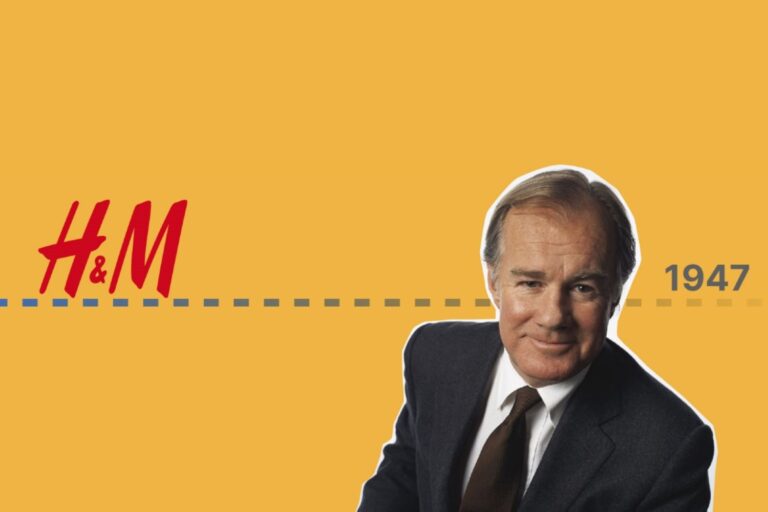AutoZone vs Amazon: Can Warehouse Stores Still Compete with E-Commerce Giant?
Each year, people can hear more and more about the increase in online sales. And as e-commerce continues to grow, talk of the death of brick-and-mortar continues to grow with it.
In this digital day and age, that opinion does not seem misplaced, but are the naysayers, right? Although there is some validity to their arguments, brick-and-mortar stores are not going to dissipate if they are able to adapt. For brick-and-mortar businesses and warehouse stores to keep their footing, there are adaptations they can make to stay strong in their market and beat out their online-only competition.
A 40-Year Old Auto Parts Distributor with Open Mind Leadership
AutoZone is one of the nation’s leading automotive retailers, but they offer much more than just parts and accessories for your vehicle. The company is based in Memphis, Tennessee.
Like its closest rivals, O’Reilly, Advanced Auto Parts and Napa Auto Parts, AutoZone sells just about everything a person would need to fix, maintain, or improve a car or truck.
Originally named Auto Shack, AutoZone opened its first store in Forest City, Arkansas in 1979, selling light truck and auto parts. Early growth came quickly. The company opened its 100th store in Weslaco, Texas, in 1983, just four years later. It was spun off from Malone and Hyde in 1986. That same year it debuted the first products of its in-house Duralast brand, under which it markets an array of items, including starters, alternators, batteries, and hand tools. The following year, Auto Shack changed its name to AutoZone.
In 1999, the company listed on the New York Stock Exchange. And from there it continued to grow to 1,000 stores by 1995 and 6,000 by 2017. Now, the company operates more than 6,000 locations in the United States, Puerto Rico, Mexico, and Brazil. In addition to on-site locations, AutoZone distributes auto parts online through various websites. Additionally, many U.S. stores also offer a Pickup In-Store option, allowing customers to place orders for accessories and components on the website and have it delivered to an AutoZone store near them.
The company offers generally low prices and attempts to be the price leader in so-called hard parts, such as alternators, batteries, and engines. Each store’s product line includes new and remanufactured automotive hard parts; maintenance items, such as oil, antifreeze, and transmission, brake, and power steering fluids; and accessories, such as stereos and floor mats. Parts are carried for domestic and foreign cars, vans, and light trucks.
AutoZone vs. Amazon in the Battle of Auto Parts Market
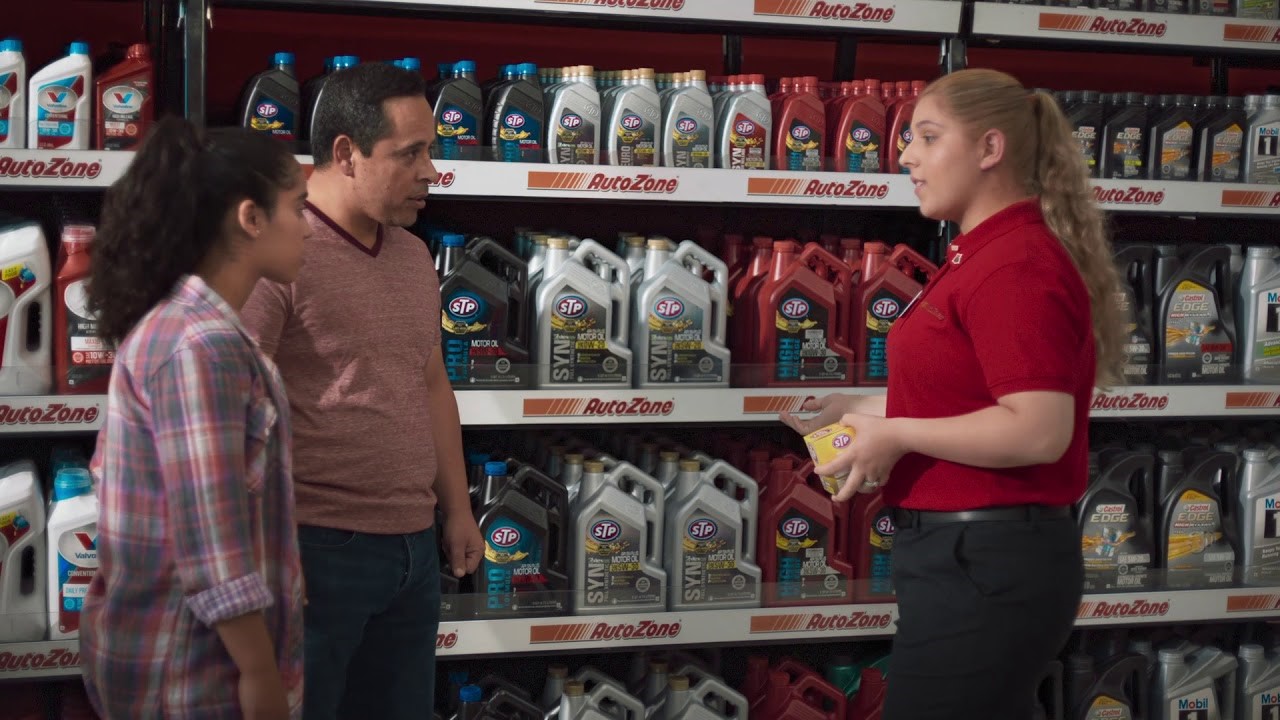
Amazon has crushed many iconic American companies, but auto parts retailers like AutoZone have managed to fend them off. Recently, investors say AutoZone has been growing a new business that could lead to several more years of solid growth.
According to Matthew McClintock – managing director at Raymond James: “AutoZone is a best in breed retailer, specifically in the auto part retail industry. But I would say that their supply chain is probably best in breed or one of the best in breed supply chains across the entire retail industry.” But threats and challenges do remain. AutoZone has some capable rivals and there are massive changes taking place in transportation that threaten the entire automotive industry.
Advantage Over E-Commerce
Two key advantages that enable AutoZone and its peers to fend off competition from e-commerce companies are service and parts availability.
Stores like AutoZone and O’Reilly invest money in training their staff to help customers with often detailed and highly specific questions about cars. That is service that e-commerce giants such as Amazon are not yet in the business of providing. These advantages have also allowed auto parts retailers to face and fend off threats from much bigger brick and mortar retailers who have had the ability to undercut them on price. “You don’t really know you need windshield wiper blades until it’s raining and then at that point you need them now, so you don’t have time for next day delivery. You just want to get them replaced immediately. And if you pull into an AutoZone, they will go, the employee, will go out there and do it for you.” – said Matthew.
The emphasis on in-store service has been especially important for AutoZone.
About 80 percent of AutoZone’s business comes from people repairing their own cars with the other 20 percent coming from professional mechanics. A lot of these customers can be gearheads and auto enthusiasts, but many of them are simply customers who would rather work a bit on their own cars to save the expense of a trip to the mechanic. While a lot of these customers might be knowledgeable about cars, they typically do not have the same level of expertise as a professional mechanic. These stores also enjoy somewhat stable demand. Car parts are not luxury or recreational items. Drivers need their cars for transportation. So, auto parts retailers can often rely on at least some kind of customer base whether the economy is good or bad.
AutoZone’s Rising Shares
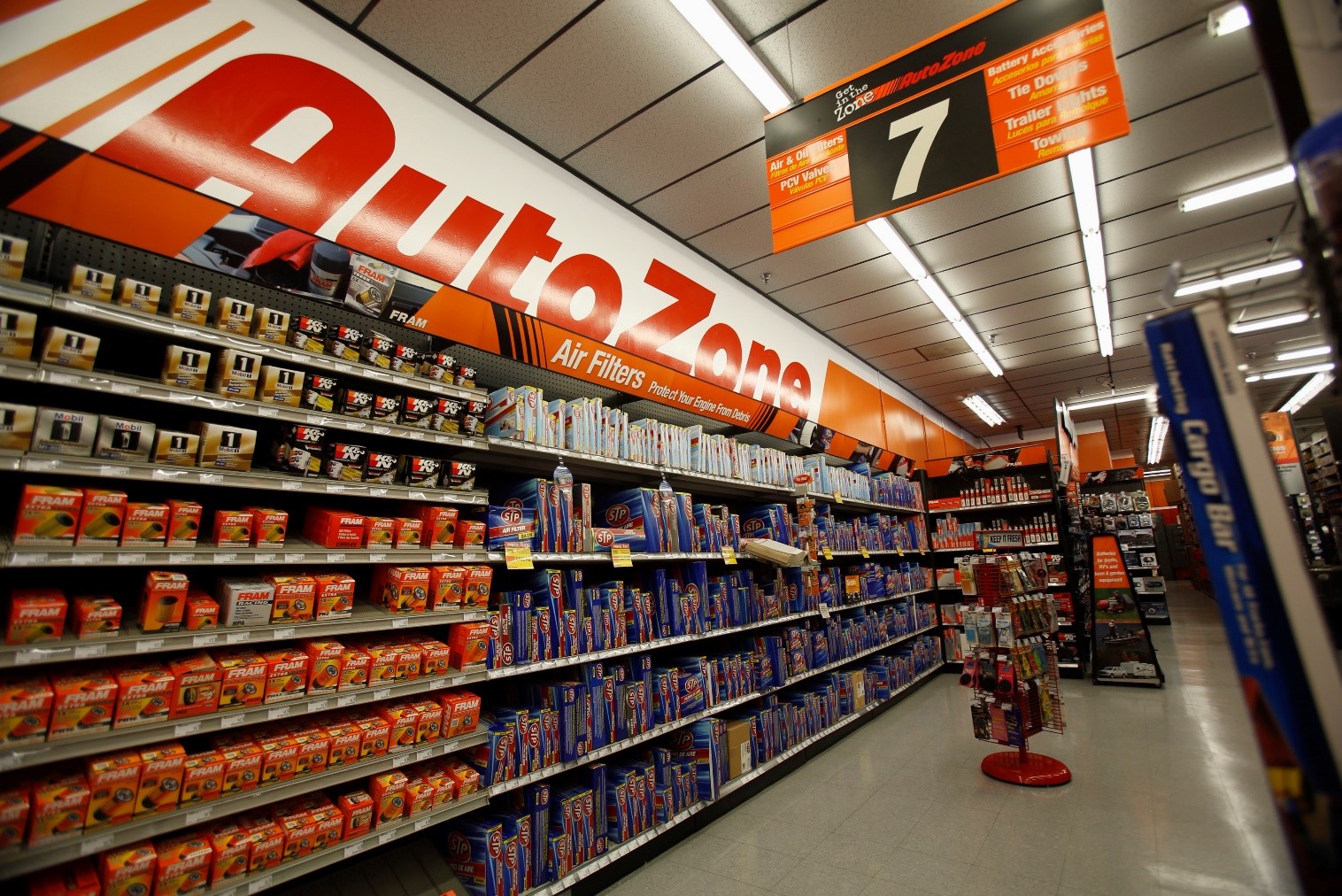
As the economy has improved and gas prices have come under pressure, people have felt free to drive more. More driving eventually leads to more parts failures. The other factor is that a historically high number of the right kind of car for auto parts retailers is on the road right now.
But a relatively protected industry with a good, stable customer base does not really answer the $1,200 question. If all auto parts retailers can offer service, why are AutoZone shares priced so high, even far higher than its already good competitors. What is setting it apart?
For one thing, AutoZone’s forward price to earnings ratio is smaller than those of rivals. Forward P/E is a ratio commonly used by investors that compares the price of a stock with a company’s expected earnings. It allows investors to compare the value of companies of different sizes and different share prices. The lower that ratio, the more earnings an investor may expect to get for every dollar spent on a share. The main things that often drive a higher or lower forward P/E ratio are things like the rate at which a company is growing, its ability to deliver earnings consistently and the quality of the assets it owns. But what we are seeing today is AutoZone has the lowest ratio in the industry.
And its growth opportunities are accelerating. And what we have seen in the last couple of years is AutoZone has made a lot of investments. Their growth is now reaccelerating. They are not mature. They are getting into commercial. And so, I am willing to pay more for a dollar of earnings at AutoZone than I would historically, because it is no longer considered a mature company. It is a growth company.
And a big part of what has been fueling the enthusiasm over AutoZone has been its recent push into commercial parts retailing often called Do It for me or DIFM. As opposed to its traditional business in Do It Yourself or DIY. DIFM basically means professional mechanics and body shops. These clients want to be able to order a part needed for a customer and receive it within hours or even minutes in many cases in about as little time as one would expect a pizza. AutoZone has been investing heavily in building up the supply chain needed to compete in commercial parts supply.
In recent years, AutoZone has been ramping up the number of hubs, especially mega hubs it must improve its chances of having a certain kind of part in an area at any given time. That kind of selection is especially important when you are trying to serve a mechanic who needs a part right away.
Now, analysts expect the company has several years of profitable growth in its commercial business left. Experts said that there’s really been an acceleration in the commercial business as AutoZone have made a few investments both in their supply chain and in their people to really refocus on that part of their business, although it’s the minority of sales it’s been a majority of the organic growth driver and really it’s address concerns that investors have had longer term as the business and the industry shifts secularly towards to Do It For Me.
And AutoZone proven that they are a viable competitor that can take market share over there. Matthew said that: “AutoZone only has to 15 percent of its business in the Do It for Me category. Their peers have more of a mix of 50 percent of their sales. And so, we see tremendous growth opportunity at AutoZone over the next honestly decade.
From the expert views, it is said that “Amazon is obviously more of a risk to an AutoZone which does a majority of their business in DIY”. AutoZone is making a big push into serving commercial customers where there is more potential growth. The increasing technical complexity of cars means it is ever more difficult for ordinary customers to service what they own. That bodes well for sales of parts on the commercial side. More sophisticated parts cost more money. A halogen headlight for a 2005 Jeep Wrangler might cost $15, but a new headlamp on a luxury vehicle — the sort that can swivel to follow the shape of the road — might cost hundreds of dollars.
So far, Amazon has not been able to crack the code of the commercial auto parts business. Parts sellers need a mind-boggling degree of inventory — enough parts for the wide array of cars on the road. It also does not yet have enough points of distribution around the country to replicate what auto parts stores do for commercial customers, and it might not be the best use of their resources right now to invest in that, MoffettNathanson analyst Greg Melich said. Of course, he added, that could change in just a few years. Amazon did not have a strong grocery distribution network, that is, until it bought Wholefoods Market.
The Company’s Culture behind Their Success
With an operation inspired by family values, AutoZone strives to be a company where its customers—people who take care of cars—come first and where exceptional performance is a daily goal. Exceeding customers’ expectations is the first value for a reason—it drives all others. It is the foundation of AutoZone’s approach as a company, one based on providing “WOW!” Customer Service and Going the Extra Mile. It is about understanding your customers’ needs and working to create solutions to their problems. “It starts with everyone’s title including ‘Customer Satisfaction,’” says Joe Sellers, – Vice President of AutoZone. “On store visits and shop sales calls, we all lead by example by putting professionals first.”
“We pride ourselves on our organizational culture. We share that Pledge at the beginning of our meetings as a way to continually remind ourselves that if we live up to that aspiration, we, as a team, will be successful.”, says Mitch Major, AutoZone’s Vice President of Supply Chain. Major has worked at AutoZone since 2005. Those guiding principles ensure that the company’s commitment to excellent customer service, trustworthy advice and continuous improvement is a focus for every AutoZone.
Creating a culture of caring naturally begins with treating people with dignity and respect. However, caring also comes down to demonstrating concern for others, your community, and your customers—on a consistent basis. It is not enough to exhibit care on occasion; for AutoZone, exhibiting care is a daily commitment that began with the founders. Today, the AutoZone Charitable Program supports nonprofit organizations like the TechForce Foundation and the Automotive Aftermarket Charitable Foundation, as well as provides financial aid to several different programs. Its website even has a place to request charitable contributions.
Becoming the leading auto parts retailer for nearly 40 years did not happen on accident. That ascension occurred due to a focus on acting in a manner of the highest standards, using resources wisely and creating a culture where strong initiative, acting quickly and improving offerings is the foundation.
“We’ve done a lot of work over the last few years reinforcing in our organization what matters most to professionals,” Major says. “And, while it’s easy to see the market we serve as complicated, at the end of the day, what we do comes down to a few key deliverables: having the parts our customers need close to their shops so we can deliver them quickly and provide a customer experience that is as smooth as possible. We are working hard to improve all of those aspects of our business and continue to invest in that direction.”
AutoZone recognizes its AutoZone’s that go above and beyond for its customers through its Extra Miler recognition program. By highlighting the benefits of AutoZone’s 100 percent labor warranty and availability of products, he was recognized for being able to get a shop better service than it had with another national chain. Within the company itself, helping teams succeed is based on actively contributing to team goals, being a supportive team member and seeking opportunities to lead. “We measure our success based on feedback from shops, as well as our ability to earn trusted partner status with customers,” Sellers says. “We work closely with our customers to help them better serve their customers and, in turn, AutoZone benefits from the partnership.”
Challenges in The Auto Industry
Auto Industry is helped by the ever increasing mechanical and technological complexity of vehicles. There are some reasons to think the stock does not have much more upside. Investors also do see a few other potential threats to auto parts retailers. E-commerce businesses such as Amazon remain a threat. The company that began mostly with bookselling over the years became known as the Everything Store and has begun moving into traditional retail businesses, both through its acquisition of grocery retailer Whole Foods and other experiments in brick and mortar selling. E-commerce also poses an oblique or indirect threat.
Even if Amazon decides it does not want to move into auto parts, auto parts sellers could suffer competition from other retailers seeking refuge from e-commerce rivals and other businesses. AutoZone’s competitors are liable to not give up commercial auto parts retail market share without a fight either.
Learning Points from AutoZone
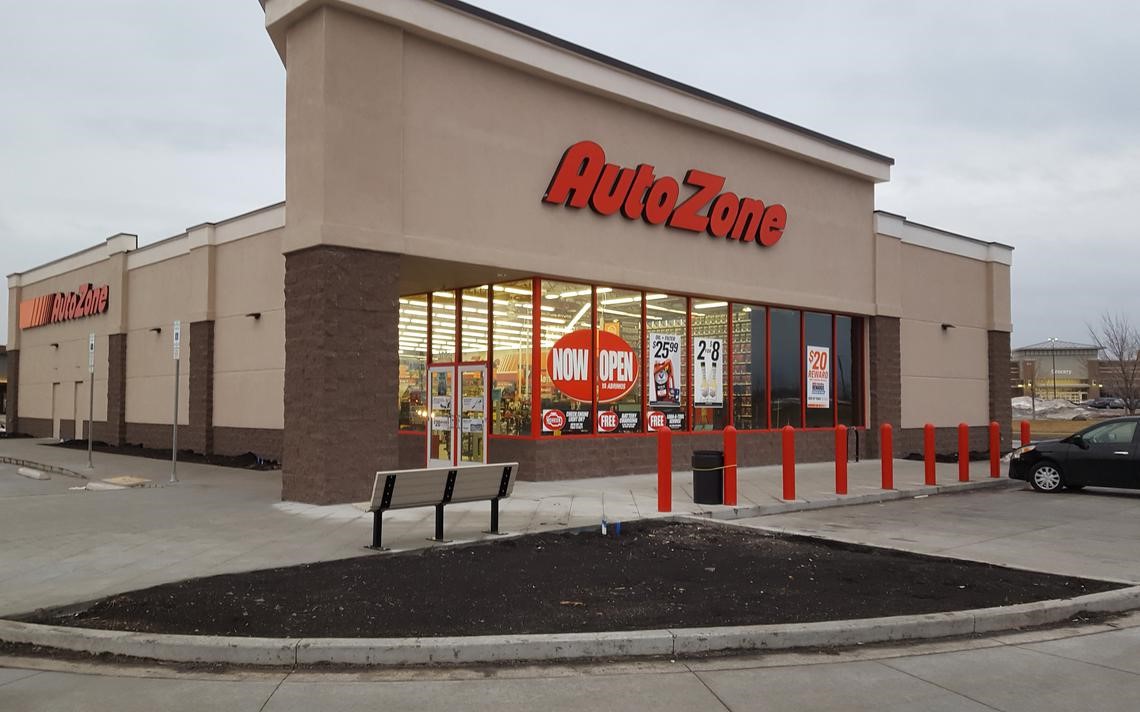
From the case of AutoZone, warehouse and retail stores are not going anywhere, but their strategies need to change. As consumers move toward online shopping experiences, it is become a critical time for warehouses or brick-and-mortar stores to reshape their business strategies for modern demands. Auto parts retailer AutoZone is one of the lucky, or clever, retailers that has managed to fend off attacks from e-commerce giants such as Amazon. As many once-legendary names in different retail sectors struggle with cheap online competition, some investors say AutoZone is poised for growth.
So, understand how brick-and-mortar location can fit into this online-driven world is important. In many cases, it is the speed of adaptation. The retail apocalypse is less a sign that physical retail stores are over and more an indication of changing consumer behavior. People still want an in-store experience—for example, when they need to test drive a car or try on multiple pairs of shoes—but they are taking to the internet for many stages of the buyer’s journey. As they take advantage of the web, they expect to be able to learn more about and even reach out to your company from just about anywhere.
You Might Also Like:


